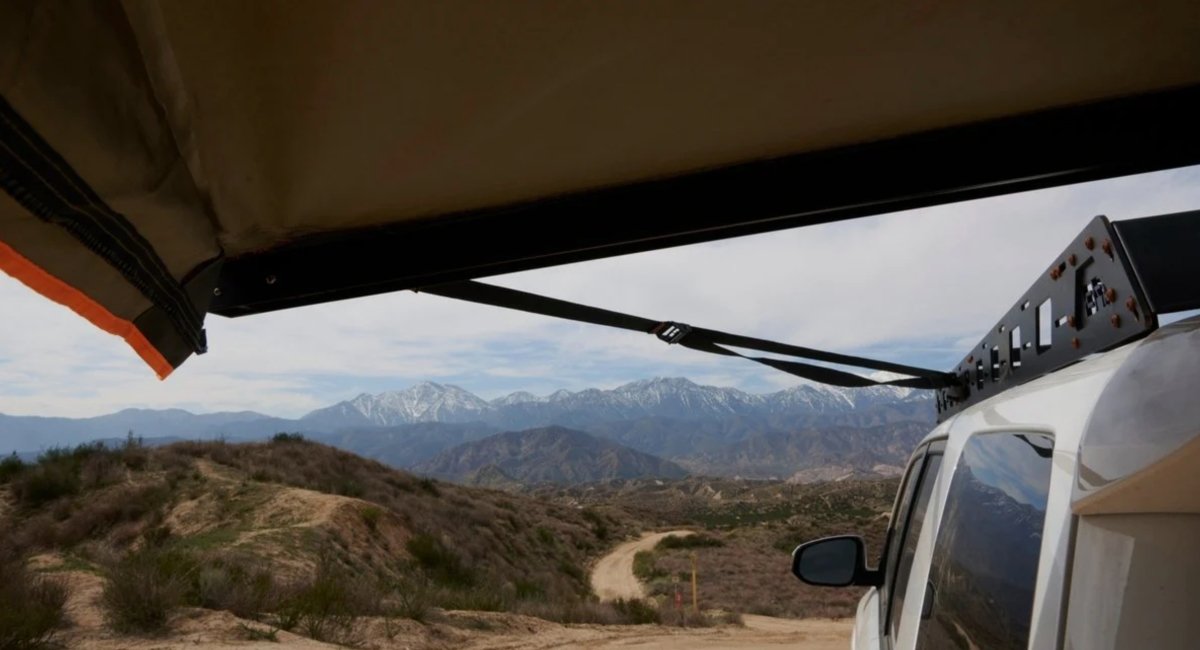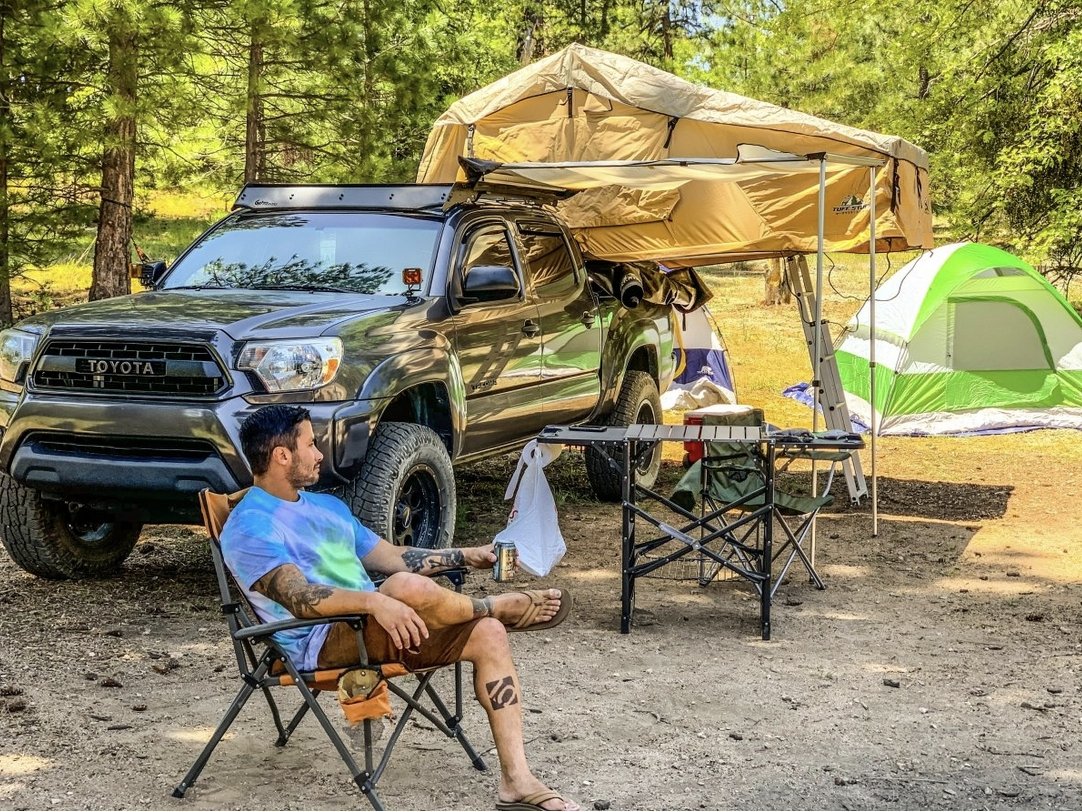If you have ever used the terms “overlanding” and “off-roading” interchangeably, you are not alone.
Nature and outdoor enthusiasts who are only familiar with the surface features of both concepts view overlanding and off-roading as similar activities, especially since they both involve a form of exploration using mechanized vehicles. However, overlanding and off-roading are two trendy and very different activities.
If you have fallen victim to the common misconception that overlanding and off-roading can be used interchangeably, we have all the information you need to know to set each term apart. In this article, we have brought all you need to know about the differences between overlanding and off-roading
Starting From The Top
At first glance, it is easy to see why anyone would mistake overlanding for off-roading and vice versa. After all, these activities both involve an adventurer exploring rugged and unfamiliar terrain with a mechanized vehicle designed to handle the challenging topography.
To anyone, it will take a trained and experienced eye to note the differences between both activities, if any. However, knowing the difference between overlanding and off-roading is easier than you think.
First, it is essential to note that although they may look the same on the surface, overlanding and off-roading are two very different activities. More importantly, they are done with different purposes and goals in mind.
This can be confusing, especially if you view both activities as a means of exploring nature. However, to truly understand the differences, you must thoroughly understand what these activities are at their site.
What Is Overlanding?
Some people consider overlanding to be a combination of road trips and camping. However, this doesn't quite do the term justice or encapsulate the purpose of the concept.
Overlanding is described as a self-reliant journey of resilience and self-sufficiency to remote areas where the journey is the primary purpose. It is vehicle-dependent travel where accommodation is camping, and the emphasis of the trip is the experience of the journey, not the destination itself.
Overlanding is more than just an activity for people who indulge in it. It is a movement, a way of life that involves a self-sufficient exploration of the world. Compared to many other activities today, overlanding has its history deeply rooted in the growth of civilization.
With this growth came expansion, and with the expansion came a need to transport humans and animals on lengthy journeys over land. Back then, these journeys were made on foot and on animals.
Although it has been popular for many years, especially in Australia (where it originated from), overlanding is only now becoming a mainstream activity as more and more people recognize its uniqueness.
Overlanding has evolved from meaning the transportation of humans and cattle over land and adopted a more modern and diverse meaning. At its core, overlanding still retains its transportation factor, but now, it involves using mechanized vehicles and modern equipment.
With overlanding, many people can live out their dreams of exploration in a way they never deemed possible. The most crucial factor of overlanding is undoubtedly the fact it is about the journey and not the destination.
But what does this mean?
When you choose to go overlanding, you do so to have a vehicle-supported, self-reliant adventure in natural and uncharted scenery, and often for an extended period. This period can range anywhere from a few days to a few years.
As an overlander, you are solely responsible for yourself, survival, and, of course, your vehicle. Although the journey is vehicle-supported, your vehicle is only a means to your overlanding goal. Where activities like camping and road trips focus on reaching a specific destination, overlanding focuses on enjoying the journey up to the destination.
In other words, if you are going on a camping or road trip to Oklahoma from Texas, Oklahoma and the activities it holds are the goals. At the same time, the experience gathered on your journey to reach Oklahoma is only a secondary experience.
Conversely, if you are going overlanding to Oklahoma from Texas, the primary goal is to enjoy every bit of the journey, while reaching Oklahoma is only the secondary goal.
It is also worth noting that overlanding is considered a camping concept because the primary means of accommodation during your journey is camping. As an overlander, you do not have the luxury of staying in private campsites. Instead, you will have to go boondocking and make do with your tent or RV.
While you camp, you will not be privy to the luxuries provided in private campsites like electrical and water hookups. Instead, whatever luxury you have is derived from the resources you bring with you on your trip.
Essentially, it is essential to remember that overlanding is a self-sufficient trip focusing more on a journey than a destination.

What Is Off-Roading?
Like overlanding, off-roading involves driving a mechanized vehicle across natural terrains. However, this is done with a very different purpose in mind.
Off-roading is reserved for people who derive satisfaction from conquering treacherous terrains. It doesn't matter if it is muddy, murky, wash-boarded, sandy, or rocky, off-roaders love nothing more than driving across landscapes that other people consider horrific, spine-chilling, and impossible.
For an off-roader, a path with no road is the best road for them. Off-roading is described as an activity that involves driving over unpaved or rough ground. While other drivers stick to smooth and paved roads, off-roaders use their mechanized and modified vehicles to access the more challenging terrains.
Off-roading is usually done as a recreational activity where the purpose is personal satisfaction, such as racing against other off-roaders or even competitive trials. These activities take place in areas with diverse road conditions with the activities ranging from:
- Dune bashing (off-roading on dunes)
- Desert racing
- Rock racing (high-speed racing over rocks)
- Mudding and mud plunging (driving through wet mud or clay)
- Rock crawling (similar to rock racing)
- RTV and CTV trialing competitions.
As you would expect, it takes a hardy vehicle to survive a drive in these conditions. This is why off-roading is only done in specifically altered and “lifted” vehicles.
Vehicles- or more specifically, trucks- created for off-roading didn’t always exist. They were invented to solve the problem of transportation in remote and unpaved regions, especially since the regular cars were not aggressive enough for those terrains.
Off-road vehicles date back to the early 1900s, when an inventor named Adolphe Kegresse was credited with inventing these intimidating rigs.
However, ever since the creation of the first off-roading vehicles, which were also called Kegresse trucks, off-road vehicles have been continuously modified to create a vessel strong enough to withstand prolonged adverse conditions without a problem.
At its core, off-roading is a vehicle-dependent high-intensity activity that involves driving over challenging terrain to conquer that terrain.
Differences Between Overlanding And Off-Roading
From the overview, it is easy to see how similar overlanding and off-roading are. However, with a deeper look at both activities, you can quickly spot the glaring differences between both activities.
So, how exactly are these two different from each other?
1. Purpose
The first easy difference to spot is the individual purpose of both activities. Overlanding is usually done as a means of exploration where the sole purpose is an adventure.
From the experience of remote camping to the breathtaking natural scenery encountered on the way, an overlander derives satisfaction from soaking in every second of their trip.
On the other hand, off-roading is more like a challenge than an adventure. Admittedly, the journey encountered as an off-roader travels across a terrain is an adventure on its own, the sole purpose of the activity is to survive an extremely rugged terrain and reach a particular destination on their map.
2. Terrain
As a rule of thumb, off-roading is usually done in challenging or off-road terrains. The roads traveled during these activities are unmanaged and remote, which offers the thrill of the activity.
An off-roader is mandated to drive over off-road and bumpy terrains. This is the sole purpose of being an off-roader. Inversely, overlanding can be a combination of on-road and off-road driving. The overlander’s primary purpose is adventure, and they often pay little attention to the terrain they need to travel.
Although they are resilient, courageous, and often choose to test their vehicle’s capabilities, not all overlanders prefer to travel on rugged terrain. While overlanding, an explorer may choose to stick to well-paved highways, well-driven roads, and well-managed tracks.
They can also choose to explore terrains not usually traveled by everyone. Sometimes, they decide to do both. This is why an overlander can be considered an off-roader (given the right conditions), while an off-roader can never be considered an overlander.
3. Duration
Overlanding is a lifestyle that requires commitment. This is why this activity often drags on for a minimum of a few days to a few years. Overlanding is not just a short weekend trip that requires you to be back home by Sunday.
As an overlander, your vehicle not only becomes a vessel of transport for the sake of your adventure but also your primary living quarters while you will camp on the go. Off-roading, on the other hand, doesn’t require being on the road for an extended period
It is usually executed over a shorter time, usually a few days at most. It also requires a shorter distance- usually focused in one location- than overlanding. Additionally, overlanding is often executed at a slower pace than off-roading.
This is mainly because the sole purpose of overlanding is to enjoy every bit of the adventures on the road, and off-roading focuses on conquering a terrain over a short period.
4. Vehicle
If you think off-roading and overlanding require the use of the same types of mechanized vehicles, you might want to think again. Off-roading requires an all-terrain vehicle that can handle challenging terrains and topography.
Because a regular SUV won’t survive the adverse road conditions, off-roaders choose 4WD cars, All-Terrain Vehicles (ATVs), or custom-modified vehicles that can handle all terrains.
Off-roading vehicles are built explicitly for off-roading life. They come with features not seen on regular trucks that make it easier to conquer rock, muddy, or even murky terrains.
Although overlanding vehicles often come with off-roading abilities, they are not specifically tailored for off-roading activities. Instead, they are customized to support life on the road, a feature that will put off-roading vehicles at risk.
As an overlander, you are going on a self-reliant journey for an extended period. During this time, you need all the resources to facilitate your comfort (no matter how limited) and survival on the road.
This means you need a vehicle that will not only be your home but also store your essential overland gear and survival kits for the duration of your journey. This is why overlanding vehicles have enough passenger and interior space to carry cargo.
Off-roading vehicles are built to be hardy and fast, a luxury they won’t be able to afford if they are laden with equipment. This explains why they come with less cargo space.
Essential, off-roading vehicles are built for strength and sturdiness, while overlanding vehicles are built for reliance and to support living.
5. Gear
Off-roaders generally need less gear than overlanders do. This is mostly because they are on the road for a shorter period than overlanders. This requires less survival kit and personal equipment.
Since off-roading focuses on putting your vehicle through punishing road and weather conditions, the bulk of kits that an off-roader takes on an off-roading trip is primarily to help them get to their destination safely. Some of these gear include:
- Extra tires
- First-aid kit
- Vehicle recovery kit
- Fire extinguisher
- Food storage (if necessary)
Overlanding gear, on the other hand, includes everything that might facilitate an overlander’s survival. These include:
- A rooftop tent
- Sleeping supplies like pillows and blankets
- Food and water storage
- Portable camping stove
- Cooking and eating utensils
- Extra clothes
- Hygiene supplies like toiletries, a portable shower, and a portable toilet
- Navigation and communication gear
- Emergency kit
- Vehicle recovery kit
- Extra tires
- Extra fuel
Overlanding VS Off-Roading: Whis Is Right For Me?
Overlanding and off-roading are exciting activities and excellent ways to connect with nature. However, they are very different activities and are often reserved for adventurous people with very different interests.
This begs the question, “which of the two activities is right for me?”
Choosing an activity between overlanding and off-roading is a matter of preference and logical consideration. Ask yourself questions like:
- What interests do you have?
- How much time can you dedicate to the activity you want?
- Do you have any experience?
- Do you have a budget?
- What will be your sole purpose for choosing any of those activities?
These questions will make it easier to choose the activity best for you. However, at the end of it all, off-roading and overlanding are both excellent ways to create unforgettable memories.




